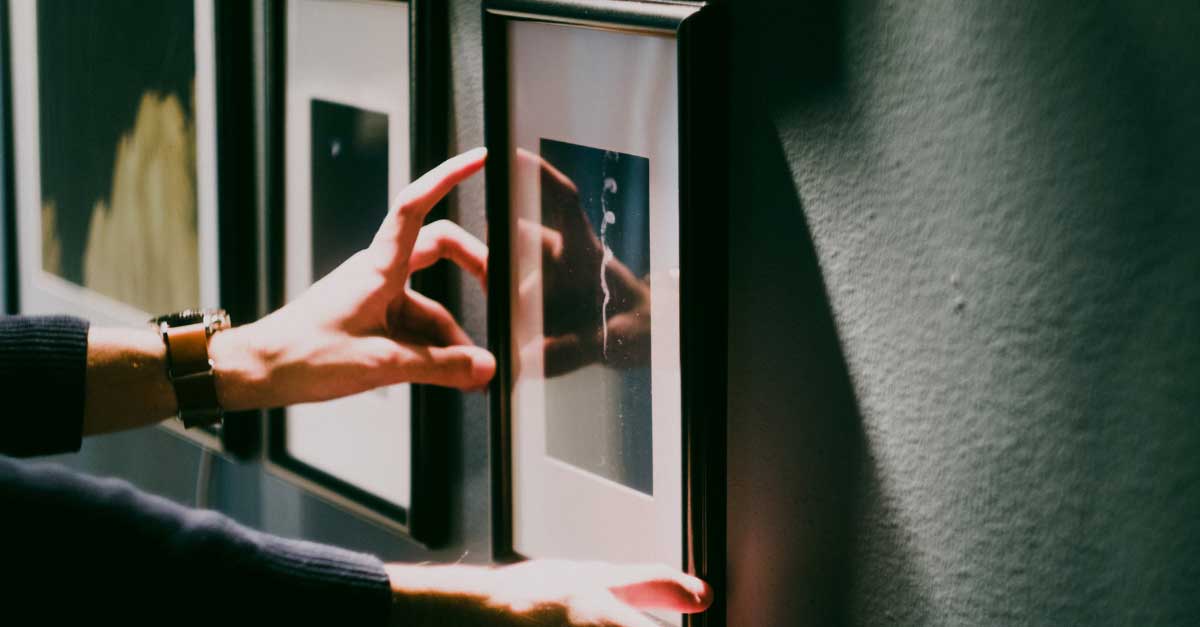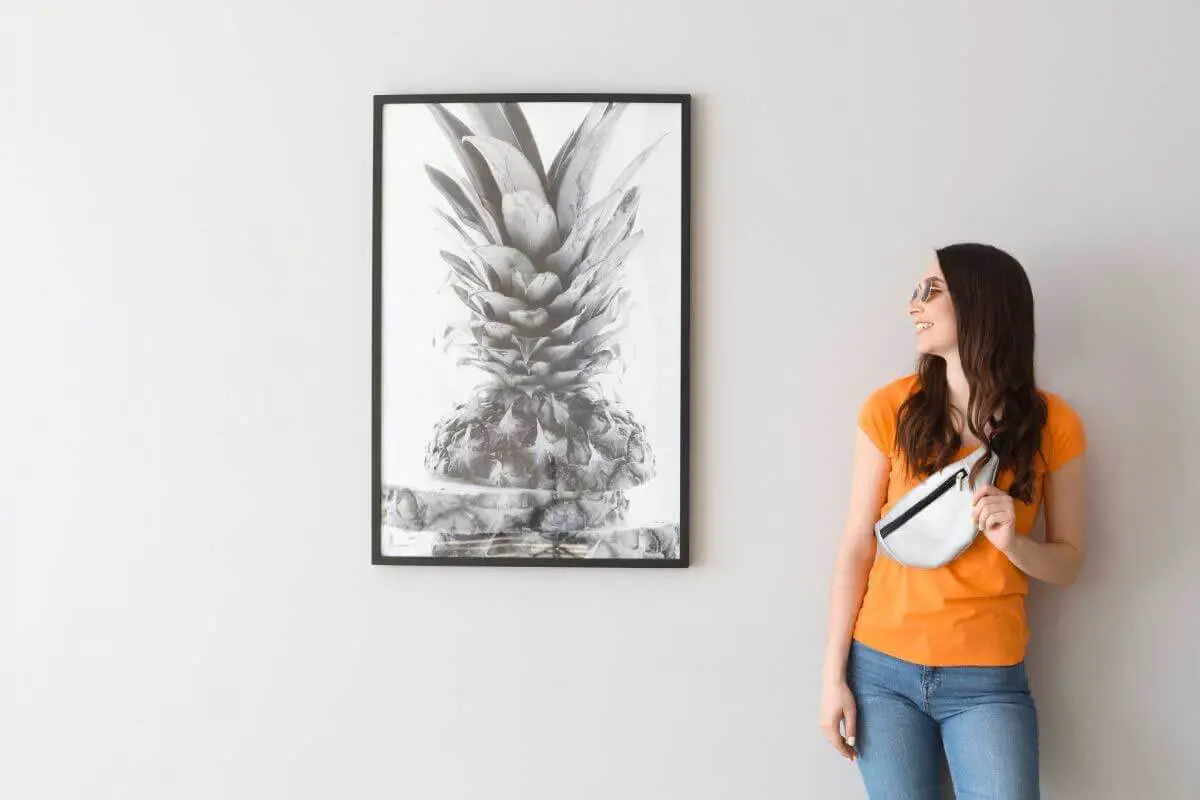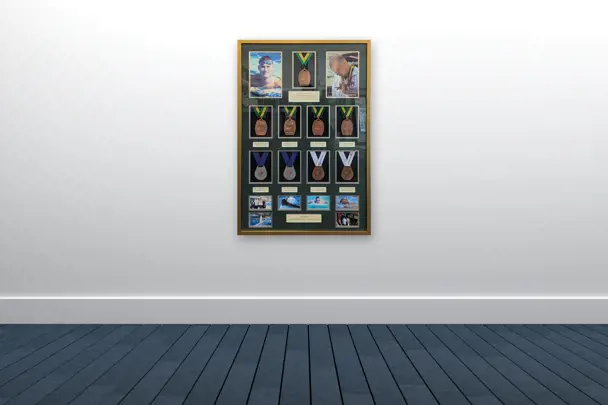Displaying a picture frame can breathe life into any blank space but choosing the best hanging method can be a problematic task. Without prior planning, you run the risk of permanently damaging walls and paint which can be an expensive mistake to fix. To help you avoid this costly issue, we have compiled this helpful guide to explain the variety of frame hanging methods available.
1. Gallery Hanging Method
The art gallery hanging method is an elegant system that is often used in museums and exhibitions. There are three main components to this system:
- A wall-mounted track
- Cable hangers and track sliders
- Hooks to support your picture frame and grip the cable
A discreet track is installed against the ceiling or a cornice, which the cables and track sliders easily attach to. Once you have found the right position and height, attach hooks that grip the frame and cable. Then voila! Step back and admire your perfectly placed picture frame.

This hanging method is great if you like to change up your art and play with different positions. Although it may have a timelier installation process, it is affordable and easy to use.
Learn more about our specially designed gallery hanging system here.
2. Stud Hanging Method
When hanging a heavy frame, it may be best to anchor it to a stud within the wall. Studs are boards that stabilise the walls in your home and can support heavier objects, such as a picture frame or a television mount.
The first step to hanging pictures on stud walls is to locate the stud. An electronic stud finder will locate studs quickly within drywall but are not as accurate on plaster walls. To locate a stud manually, tap the wall with your knuckles or a light hammer. Listen for changes in the sound; if it is low and hollow there is likely to be no stud, if it produces a more solid and higher tone it is likely to be a stud.
Although most houses have wooden studs, some may have steel which require different fasteners. The best way to check this is by running a magnet along the wall and gauging the strength of the attraction.
Once you have located your stud, mark where you would like to hang your picture frame. We recommend using two frame hanging hooks as they are secure and evenly distribute weight. You can learn more on how to properly hang picture frames in this post.
Although stud hanging is reliable for heavy frames, it does mean the stud needs to be in the correct position and you may need to eventually patch the damaged hole in the wall should you ever wish to move you framed picture.

3. Drywall Plugs
If you are hanging a picture on plasterboard or drywall without a stud, drywall plugs can be an easy hanging alternative. Drywall plugs bite into the wall material and offer a sturdy place that a screw can be inserted into, effectively keeping your picture frame stable.
There are a variety of plugs and anchors that you can use, depending on your hanging needs. The most common types are expansion anchors or wall plugs, that enlarge into the wall once you have driven in the screw. Threaded anchors have large threads that create a bite into the wall with a good hold. These options are great for your average picture frame but consider using a more robust anchor for anything with substantial weight.
To install a drywall plug or anchor, you will need the following:
- A hammer
- A power drill and full drill bit set
- Your preferred drywall plug or anchor
Generally, you will need to drill a hole that is the same size as the plug or anchor tip, before driving them into the wall with a hammer or drill bit. Once the plug or anchor sits flush with the wall a screw can be inserted until it feels snug. Find out more about the installation of other heavy-duty plugs and anchors that are suitable for brick and concrete here.
This hanging method is effective for spaces that don’t have the support of a stud or hanging system, although they can be hard to remove and create a substantial hole. Consider your placement carefully before installing.
4. Command hanging hooks
Command picture hanging hooks or strips can be easily attached to your wall with an adhesive backing. Available in a wide range of hooks and Velcro-like strips, this method is suited to those who are renting or are unable to nail into walls, but it does come with its share of risks.
Hanging strips may not be reliable for heavier weights and may lose their adhesiveness over time, therefore increasing the likelihood of frames falling and being damaged. The weight and value of your picture frames should be considered before establishing this method.
Hanging your picture frames with minimal damage is achievable with the right method and tools. If you still are not sure which method is right for you, Frame Today can assist you with expert picture hanging advice. If you have any more questions on how to hang a picture frame, contact us today using the form below or speak to one of our friendly consultants available in your nearest store.



